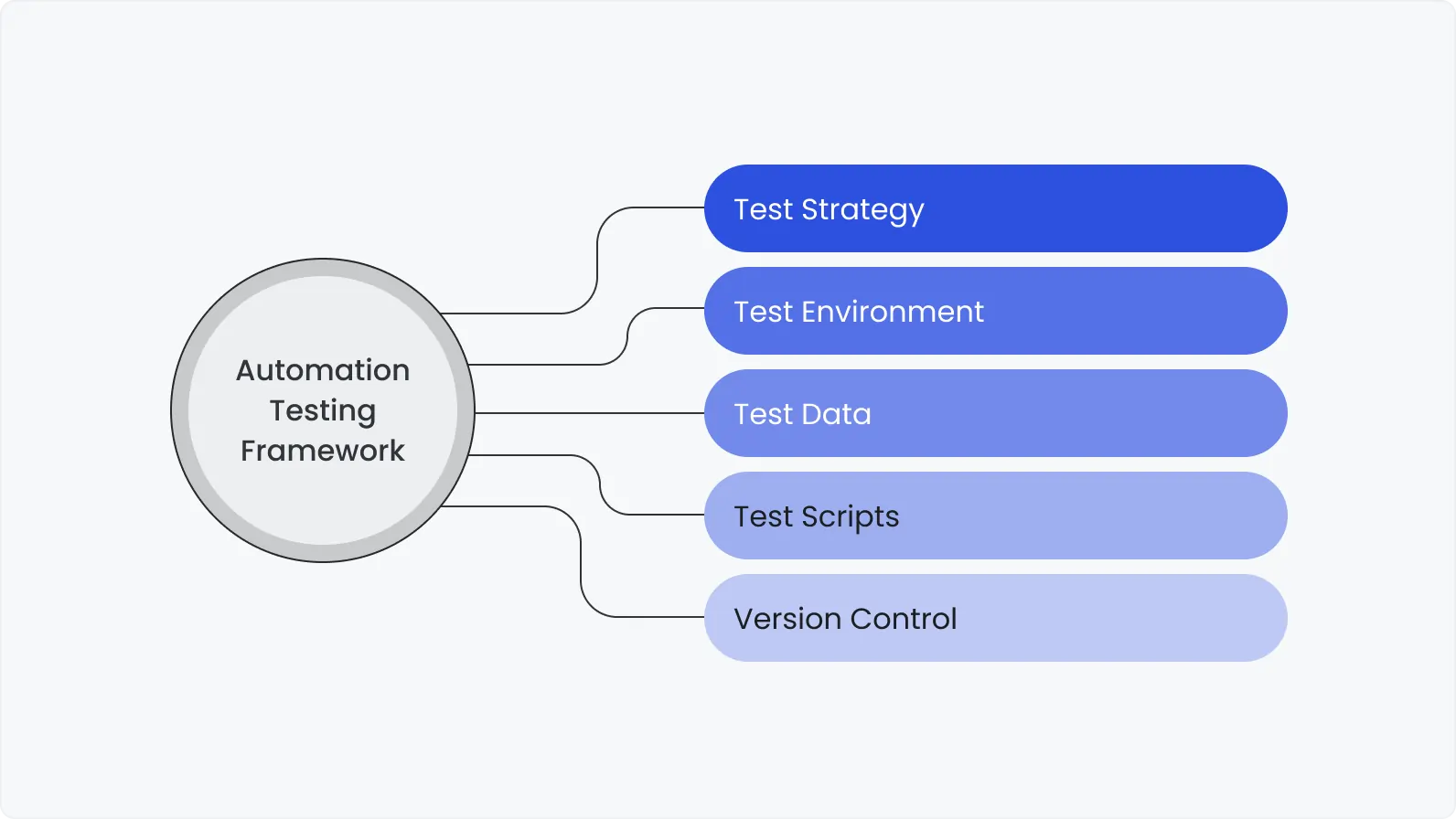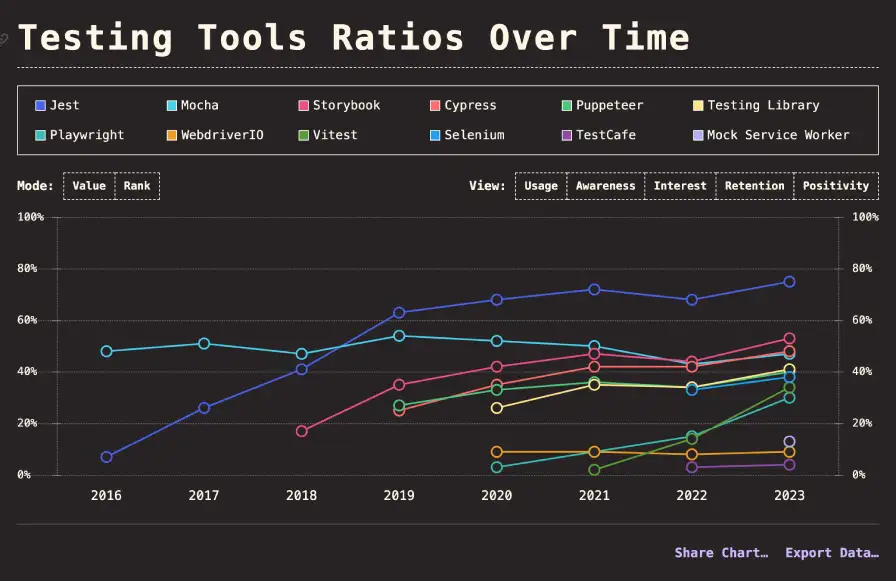Test automation as a service (TAaaS) emerges as a transformative force, revolutionizing the testing process. As of 2023, studies show a clear trend: businesses integrating TAaaS witness a significant reduction in testing cycles, leading to accelerated time-to-market and enhanced product quality.
Consider a scenario where a financial software company, driven by the need for a rapid release of updates, implements TAaaS. What does it yield to? A streamlined testing process that not only identifies bugs swiftly but also adapts seamlessly to the ever-evolving software architecture.
This article delves into the intricacies of establishing a robust automated testing strategy. From selecting the right tools to crafting efficient test scenarios, we navigate the terrain of TAaaS setup, providing actionable insights for CTOs and CEOs of U.S. SMEs looking to orchestrate a harmonious symphony of software testing.

The role of test automation as a service
Automated testing as a service emerges as a linchpin, redefining the very essence of test automation. At its core, TAaaS is a dynamic approach that outsources automated testing processes, allowing organizations to harness advanced tools and frameworks effectively.
Imagine this: you have a personal quality insurer for your groceries. Every time you go shopping, this aider checks the quality of the products you buy so that you get much healthier food at the end of the day.
Similarly, testing software helps ensure the quality of the end product.
[Re]Defining test automation as a service
Automation testing as a service is a paradigm shift in testing dynamics. The best TAaaS is that you don’t even notice. It integrates seamlessly into software development workflows, automating repetitive testing tasks with precision. This empowers teams to focus on high-value, creative aspects of testing while test automation as a service takes care of the routine.
Usually, companies are often faced with the challenge of meeting all their testing needs with just their in-house team. That's where the concept of outsourcing testing services comes in. This remote collaboration model involves delegating certain testing processes and tasks to outside experts or organizations who work in tandem with the domestic QA team to ensure that the product is tested thoroughly and efficiently.
Testing services in this context can encompass a wide range of responsibilities, from full-scale testing to partial transfer of duties to outside testers. Independent QA engineers can collaborate with the software development team at all stages of the development process, helping to identify technical bugs and streamline testing processes. By leveraging the expertise of outside professionals, companies can accelerate their time-to-market, improve software quality, and ultimately gain a competitive edge in their industry.
Contributions to test automation
Test automation as a service plays a pivotal role in elevating the practice of test automation. By leveraging specialized tools and scalable infrastructure, TAaaS ensures a consistent and efficient testing process. It operates as an enabler, allowing organizations to implement automation seamlessly without the burden of managing the underlying infrastructure.
Get a leg-up with software quality assurance
The advantages are manifold. Test automation as a service injects speed into the testing lifecycle, catching bugs early and often. It enhances test coverage, ensuring a more comprehensive evaluation of the software's functionality. This not only accelerates the development pipeline but also significantly improves the overall quality of the software.
If you need a comprehensive testing process (and almost all need it), consider the TAaaS implementation because of:
Test planning and design: Automated software testing as a service provider assists in defining test strategies, identifying test cases, and designing test scripts.
Test execution and management: TAaaS providers execute test scripts, manage test environments, and monitor test results.
Defect management: Providers of test automated services facilitate defect identification, reporting, and tracking, ensuring timely resolution of issues.
Test reporting and analysis: Testing contractors provide comprehensive test reports and insights into test coverage, defect trends, and overall application quality.
Importance in comprehensive testing processes
You’ve probably heard about the recent Samsung breach. This became possible due to testing flaws too. Lured by tight timelines, they neglected the setup of a comprehensive testing process. Customer trust eroded, and this misdemeanor can lead to significant financial and reputational losses. We understand that there are pretty smart people sitting in Samsung, though there were problems with security testing.
The problem is king. So concretize the problem your testing framework must solve before launch testing. Even before you start building your architecture, you need to get your priorities together. Set up requirements, select test series, and look for different ways to automate these tests.
In contrast, companies that embrace rigorous test automation as a service in establishing a comprehensive testing process significantly mitigate such risks. TAaaS acts as a safety net, ensuring thorough testing from the project's inception to its final release.
Key components of the automation testing process

Any process runs better when it’s fine-tuned. For this reason, you should understand the essential components of a harmonious testing process.
1. Test strategy:
This is the bread and butter of any testing process — a well-defined test strategy. It must shed light on the scope, objectives, and approach of particular automation testing. A comprehensive strategy acts as a guiding document, ensuring alignment with overall business goals. A little tip — hire a skilled technical writer since the comprehensive documentation could “save you nine”.
2. Test environment:
A robust testing environment is crucial for accurate and reliable results. This encompasses the hardware, software, network configurations, and database setups required for seamless test execution. A meticulous environment setup avoids compatibility issues and ensures consistent testing outcomes.
3. Test data:
If you want to successfully complete your automation testing, ensure efficient test data management. The availability of relevant, diverse, and controlled datasets ensures comprehensive test coverage. Realistic test data reflects actual usage scenarios, contributing to the authenticity of test results. Some sources state that gathering and maintaining test data take away 30%-60% of the testers’ time. That’s why it’s crucial to ensure data quality and automate the gathering and maintaining process.
QA engineers should also inspect how the software handles invalid test data. This includes checking if the system correctly processes invalid values, displays relevant messages, and notifies the user that the data is improper.
4. Test scripts:
Automation scripts, often written in languages like Python or Java, embody the test scenarios. Well-crafted scripts ensure accurate execution of test cases and facilitate easy maintenance. Regular updates to scripts keep pace with evolving software functionalities.
5. Version control:
A version control system, such as Git, is indispensable for managing changes in the source code and test scripts. At least because you cannot collaborate effectively without it, track modifications, and ensure a systematic approach to code management.
Setting up a test automation as a service environment
Establishing a TAaaS environment involves a structured approach to leverage cloud-based testing services effectively.
1. Cloud-based TAaaS solutions:
The cloud emerges as a stalwart ally in TAaaS environments. Cloud-based solutions provide scalability, enabling the dynamic allocation of resources based on testing needs. This flexibility ensures cost optimization and accelerates testing processes.
2. Configuring test infrastructure:
Beyond the obvious, configuring test infrastructure demands attention to minute details. Load balancing, server configurations, and network optimizations play a critical role. Understanding the intricacies of resource allocation and utilization ensures optimal test execution.
3. Scalability insights:
True professionals recognize that scalability is not just about adding more resources; it's about designing a flexible architecture. Containerization technologies like Docker facilitate the creation of lightweight, scalable test environments, enhancing agility without compromising efficiency.
Hidden insights for configuring test infrastructure and environments
Beyond the obvious steps, consider these hidden insights for configuring test infrastructure and environments for scalability:
1. Implementing self-healing mechanisms:
Implement self-healing mechanisms to automatically detect and recover from infrastructure failures. This ensures that testing environments remain available and resilient, minimizing downtime and maximizing test coverage.
2. Monitoring and alerting:
Establish comprehensive monitoring and alerting systems to track the health and performance of test infrastructure. Proactively identify potential bottlenecks and resource constraints to take preventive actions before they impact testing activities.
3. Adopting a DevOps approach:
Embrace DevOps principles to integrate testing into the continuous delivery pipeline. Automate test deployment, execution, and reporting to enable rapid feedback loops and accelerate the software release cycle.
Test automation tool selection
The right tools wield the power to transform testing processes into efficient symphonies. Selecting these tools demands a discerning eye and an understanding of project intricacies.
Choosing the right automation tools for TAaaS is akin to selecting the perfect sound effects for an EDM track. The tools define the testing orchestration, impacting efficiency, scalability, and the overall success of the testing process.
There are at least 3 types of QA automation testing tools:
1/ Open-source tools: Obviously, these are community-developed and supported software that you can use without any license purchases. They provide the flexibility for customization without any constraints.
2/ Proprietary tools: These are licensed software that offer a wide range of native functionality right out of the box. Kind of off-the-shelf products. They provide access to a rich set of features.
3/ Custom solutions: This refers to a combination of open-source and proprietary tools within your AQA framework. You can leverage the benefits of both options to create a tailored solution that meets your specific needs.
Criteria for tool selection
Compatibility: Ensure the selected tools align seamlessly with existing development and testing ecosystems.
Scalability: Opt for tools that scale effortlessly to meet the evolving demands of the project.
Community support: Gauge the vibrancy of the tool's community for ongoing support and updates.
Integration capabilities: Assess the tool's integration potential with other essential software in use.
Popular test automation tools
Let’s run through the list of the most popular test automation service tools. Nothing groundbreaking, but also important to know about.

6 QA tips for comprehensive testing
1/ Prioritize test scenarios: Begin by prioritizing test scenarios based on critical functionalities, ensuring the most crucial aspects are thoroughly tested.
2/ Utilize parallel testing: Embrace parallel testing to expedite the testing lifecycle, achieving faster feedback loops and accelerating releases.
3/ Dynamic test data: Create dynamic test data sets that mimic real-world scenarios, enhancing the authenticity of test results.
4/ Continuous training: Conduct regular trainings on the latest testing methodologies and tools, developing a culture of continuous improvement within the QA team.
5/ Implement code reviews: Integrate code reviews into the testing process, ensuring the quality of automation scripts and identifying potential improvements.
6/ Shift-left testing: Introduce testing early in the development cycle, uncovering and rectifying issues in the nascent stages, reducing overall testing costs.
To sum it up
Test Automation as a Service emerges as a transformative force orchestrating the symphony of comprehensive testing. Let’s run through the top 3 main points.
Strategic setup: Establishing a robust automated testing strategy, from meticulous tool selection to crafting efficient test scenarios, forms the bedrock of success.
TAaaS environment: Cloud-based TAaaS solutions and insights into configuring test infrastructure underscore the importance of scalability and meticulous environment setup.
Tool selection: The right automation tools are the virtuosos in the testing orchestra, defining efficiency, scalability, and project success.
TAaaS is a paradigm shift, accelerating time-to-market, improving product quality, and mitigating risks. The allure of TAaaS lies in its ability to transform testing from a mere process into a strategic asset.
Let's transform your testing process — efficiency awaits. Take the leap into transformative testing with DeviQA.
